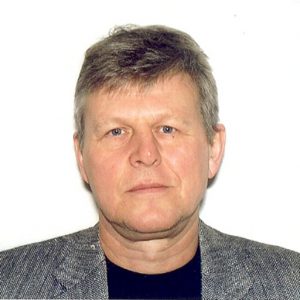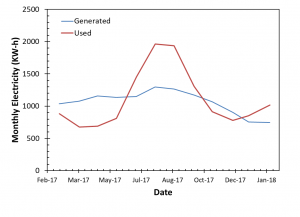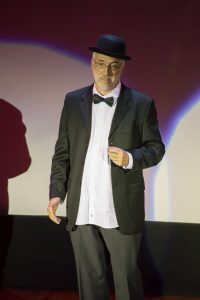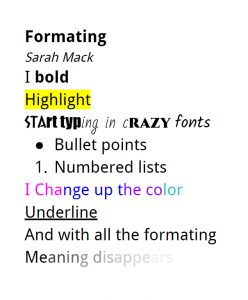Almost everyone has had the experience of quitting a job. It’s not that hard. You just go to your boss and say “Take this job and … find someone who will better appreciate its benefits.” But things are more complicated when that job is with the National Security Agency.
I joined NSA at Fort Meade, MD as my first job out of college, and worked there for nine years in the 80s and early 90s. (These were the good old days of NSA, before they started spying on Americans.) I was very proud of my work there, making semiconductor encryption chips. Like most of the people there, I had the highest security clearance the government offered – Top Secret Special Intelligence. We scoffed at those piddly Top Secret clearances that they gave away like candy over at the CIA – this was the real deal. And when you agree to accept this clearance there are certain freedoms you voluntarily give up.
The most obvious freedom I gave up was being able to talk about my work. I could only talk about work at work, and outside of work I would end up talking about the people at work, which is more interesting anyway. But the strangest lifestyle difference was the inversion of what is private and what is public. Work became private, and my personal life could only remain private if it was boring. The security office at NSA worried about its employees being blackmailed, so the skeletons in each of our closets were actively exhumed through regular security reviews and polygraph tests.
In 1988 an organization called SEMATECH was started up in Austin, Texas. For those of us working in chip manufacturing, this was a big deal – a consortium of the largest US semiconductor companies, Intel, IBM, Motorola, sending people and money to this new research lab, with the Department of Defense contributing 50% of the budget. It was the cutting edge of my profession. So I thought, maybe I could get assigned to SEMATECH for a year or two to work with these great people doing important research in the interest of US security. And moving from Baltimore to Austin for a while could be fun. Everyone at NSA agreed this would be a great idea, but there was one problem: it had never been done before. And the first rule of bureaucracy is “If it’s never been done before, it can’t be done.”
Bureaucrats have a bad reputation, mostly undeserved since they are the people that actually get things done in government. After all, the other group of government employees is politicians, and we know how much good they do. Government employees operate under an important constraint that most people don’t realize. At your job, you have rules, and if you break those rules you get in trouble, unless breaking the rules makes your company a lot of money, and then you get a pat on the back and a promotion. But in the government these rules go by a different name: they’re called laws. You don’t just break the rules, you break the law. A guess what – government employees don’t like breaking the law, so they work very, very hard to make sure everything they do follows the huge and continuously growing set of regulations that apply to almost everything they do.
It was hard to figure out how to make the regulations work so that I could be temporarily assigned to SEMATECH, but I was determined, and I was a pretty good bureaucrat. Through a lot of careful study of regulations and a lot of advocacy from my boss and my boss’s boss and my boss’s boss’s boss and a team of people from finance and legal at NSA, we created a plan and made it work. I left Maryland to come to Austin to work at SEMATECH. It was great! I did cool work with cool people, I wrote and published papers and presented at conferences, and we made a real difference. And when my 16 month assignment was over, I decided I couldn’t leave. I had fallen in love with Austin. I had found my home. So six weeks before I was supposed to go back, I told my boss I was going to resign. Of course, she was disappointed, but she understood my decision.
For my last week of working for NSA, I flew back to Maryland and started the week-long debriefing process. Quitting a job with a TSSI clearance is a lengthy process. On Monday and Tuesday it was meetings with my boss and group about projects and hand-offs, cleaning out my desk, all the normal stuff. On Wednesday I got the library to sign off that I had no overdue books. On Thursday I went to finance to finish up with my final paycheck and expense reports and to get their sign-off before the final security debriefing on Friday. And this is where things went horribly wrong. When I handed finance my exit form for their signature, they said “Sorry, we can’t sign this because our records show you owe us for an expense overpayment we made. Once you write us a check for the overpayment we can sign your form.” Well that’s odd, I thought, but OK. “How much do I owe?” “$120,000.”
What?!?!? $120,000? That was more than two years of my salary!
There must have been a mistake. No, they assured me that they had been working on these calculations for over a week, all the numbers had been double checked and approved, and they had applied the rules pursuant to joint federal travel regulation §301-74.24 scrupulously.
Regulation 301 what?
They explained to me what this regulation meant. Suppose you are on a TDY (that’s Temporary Duty, government speak for a business trip) and you fail to meet your obligations of the TDY. For example, you are sent on a trip to attend a conference but instead you go to the beach all week. The government can require reimbursement of their expenses in sending you on the trip, including your salary for the week. I was on an extended TDY, and the claim was that my obligation for the 16 month trip was to bring everything I had learned at SEMATECH back to NSA for use there, and by not returning it was the same as if I had spent 16 months at the beach instead of working.
I knew this could not possibly be right, but I discovered that finance was just doing what they were told. My boss’s boss, who had gone to the mat two years before to figure out how to send me to SEMATECH, was pissed! He had written a memo to finance the week before invoking this regulation, and the bureaucratic wheels had begun to spin. It didn’t matter that I was being crushed under them. I tried to call him, my new nemesis, but he refused my calls. I went to his office but a security guard was stationed there to keep me out. That night I was angry, but also determined. I would fight this, lawyer up if needed. I was obviously in the right, and I was not about to let some petty paper pusher ruin my life.
On Friday I went to my all-day security debriefing. At the end of the day I handed my exit form to the security officer for that final signature. “I can’t sign this,” he said. “It’s not signed by finance. They have to sign it first before I can sign.” OK. But what does that mean? “It means you can’t resign.”
Can’t. “Can’t,” he said. I can’t quit my job. That was a thought that had never occurred to me. My first reaction was, “Oh yeah, watch me.” I’ll just leave and never come back. What’s that if not quitting?
But then the security officer said four words that froze me in my tracks: “The 59 minute rule.”
I’m guessing none of you know what the 59 minute rule is, but I knew perfectly well what he meant. In the 1960s two NSA mathematicians had gone on vacation together for a week. On the following Monday they didn’t show up for work. Their boss was surprised, but assumed they had just decided to extend their trip. The next day goes by, and then the next. They still don’t show up. The supervisor was getting worried, but still didn’t do anything. The following week the two mathematicians show up on Soviet television. They had defected, taking everything they knew about NSA with them.
NSA reacted by improving their security processes, and the 59 minute rule was born. This is it: If you are going to be more than 59 minutes late for work, you must call your supervisor to inform them. If you don’t, your supervisor must contact the security office. A security officer will then try to contact you. If they can’t get in touch with you, they will call the FBI, and the FBI will come looking for you.
The 59 minute rule. Every NSA employee knew and lived by this rule every day. I instantly grasped what this meant for me. I could choose to never show up for work again. But if I did not officially severe my employment with the NSA, then I would have to call in by 8:59am, Monday through Friday, every week, for the rest of my life.
I was trapped, and I knew it. When the shock wore off, I took a deep breath. Slowly I came to understood what must be done. The only thing that can beat bad bureaucracy is better bureaucracy. And I could do bureaucracy as well as anyone. I would show up the next Monday, and work the system. And that’s what I did. I spent the weekend reading regulations, I set up meetings, provided documentation, wrote memos and got other people to write memos, and slowly the wheels of the system began spinning in my direction. I met with finance, with legal, with a director who had 10,000 people working under him. More memos were written. Consensus was formed. I never once saw or spoke to my nemesis, but his novel legal theory was discredited, and so was he. NSA paid me for an extra week to quit. By Friday I had my signature and became a free man.
It is easy to take for granted a freedom that has never been infringed. After my experience at NSA, I have always appreciated the freedom to quit.




 ence, it was a surprise to discover that the conference banquet on Wednesday night was followed by an entertainment show put on by members of our community (three of the six cast members had papers at the conference). This 40 minute show is skit humor, replete with singing, dancing, and often a fair amount of silliness (if you can’t imagine what I’d look like in an elf costume, don’t try). I was very glad to be a part of the show this year after a 12-year hiatus. I hope the audience had half as much fun watching it as we did putting it on. (Photo Credit: Bernd Geh)
ence, it was a surprise to discover that the conference banquet on Wednesday night was followed by an entertainment show put on by members of our community (three of the six cast members had papers at the conference). This 40 minute show is skit humor, replete with singing, dancing, and often a fair amount of silliness (if you can’t imagine what I’d look like in an elf costume, don’t try). I was very glad to be a part of the show this year after a 12-year hiatus. I hope the audience had half as much fun watching it as we did putting it on. (Photo Credit: Bernd Geh)